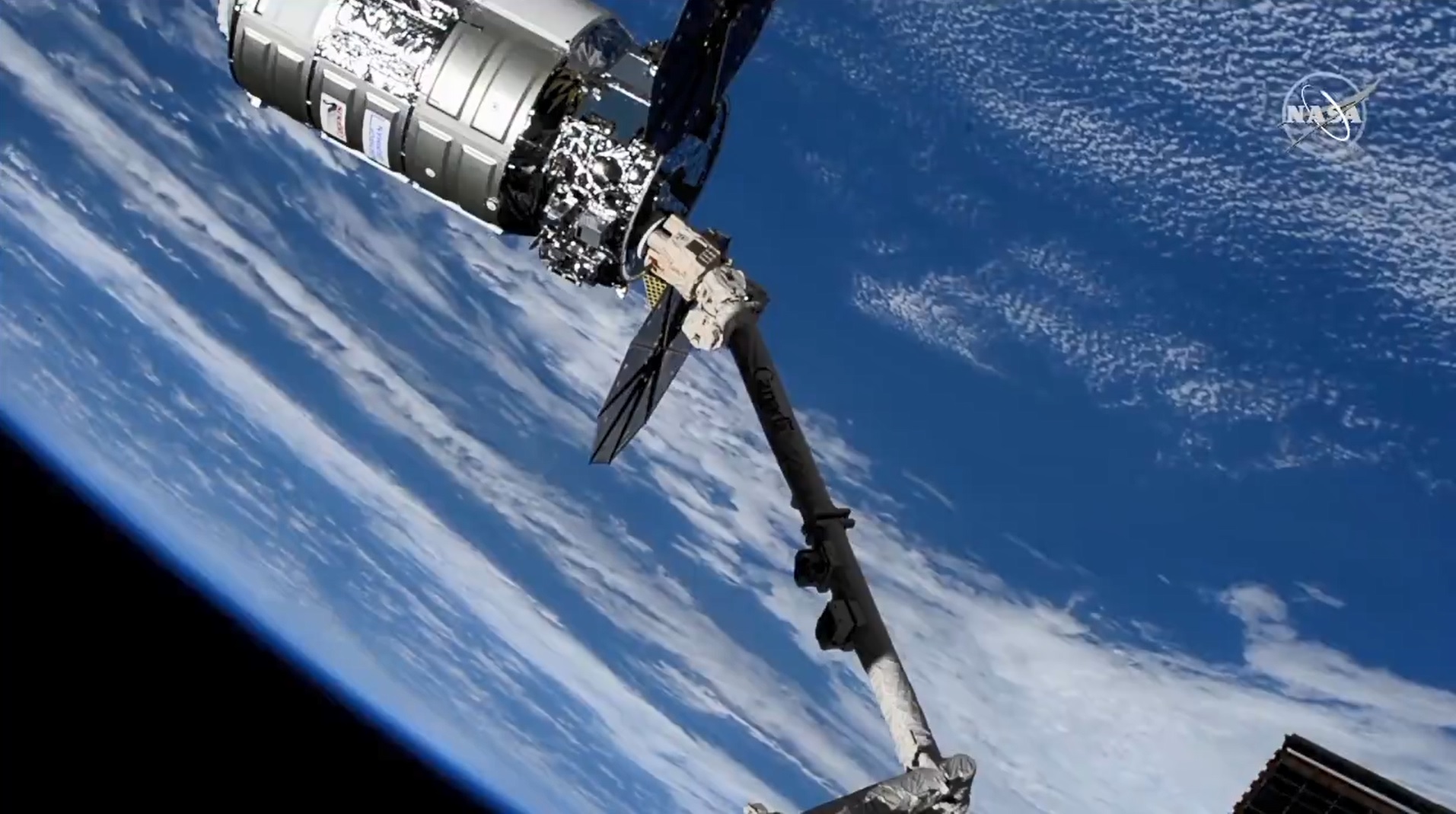Cygnus Arrival and Hatch Open Complete

The Northrop Grumman Cygnus spacecraft’s hatch was opened this afternoon after successful rendezvous and berthing operations. At 6:07 a.m. EDT, NASA astronaut Megan McArthur used the International Space Station’s robotic Canadarm2 to grapple the Northrop Grumman Cygnus spacecraft as ESA (European Space Agency) astronaut Thomas Pesquet monitored Cygnus systems during its approach. Cygnus was then bolted into place on the International Space Station’s Earth-facing port of the Unity module at 9:42 a.m. EDT. Cygnus will remain at the space station for about three months until the spacecraft departs in November.
The spacecraft’s arrival brings more than 8,200 pounds of research and supplies to space station. Highlights of cargo aboard Cygnus include research studying 3D printing using simulated lunar regolith, seeking to utilize microgravity to develop new means to treat a degenerative muscle condition on Earth, investigating new tactics to control heat during operations in space and during the intense heating of reentry, and testing a technology to remove carbon dioxide from spacecraft atmospheres with applications to future NASA exploration missions.
These are just a sample of the hundreds of investigations currently being conducted aboard the orbiting laboratory in the areas of biology and biotechnology, physical sciences, and Earth and space science. Advances in these areas will help keep astronauts healthy during long-duration space travel and demonstrate technologies for future human and robotic exploration missions as part of NASA’s Moon and Mars exploration approach, including lunar missions through NASA’s Artemis program.
NASA has continued to assess any integrated impacts to the space station from the inadvertent firing of thrusters on the newly arrived Russian Nauka module. Routine operations have continued uninterrupted since the event, with the space station prepared for the arrival of multiple spacecraft. Consistent with NASA policies, an investigation team is being formed to review the activity. NASA’s team will begin with identifying team members and defining the scope of the investigation. The team will focus on analyzing available data, cooperating with our Russian colleagues for any information they require for their assessment, and coordinating with the other international partners.
from Space Station https://ift.tt/3fVrGnG
Comments
Post a Comment